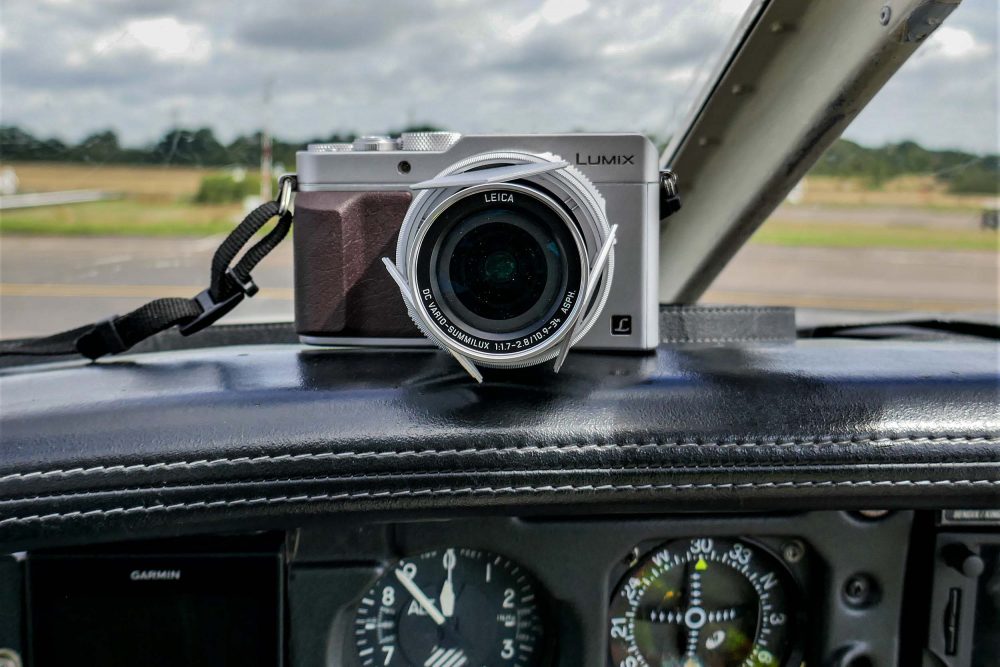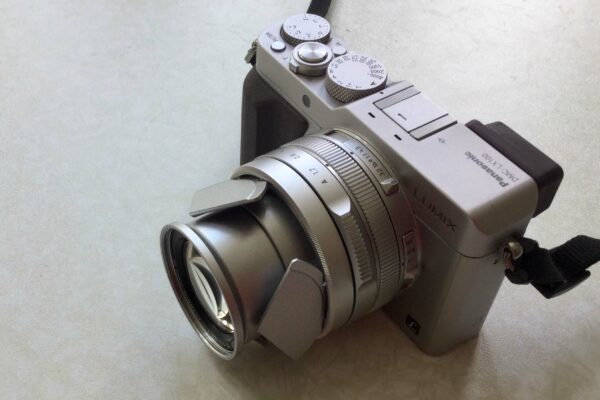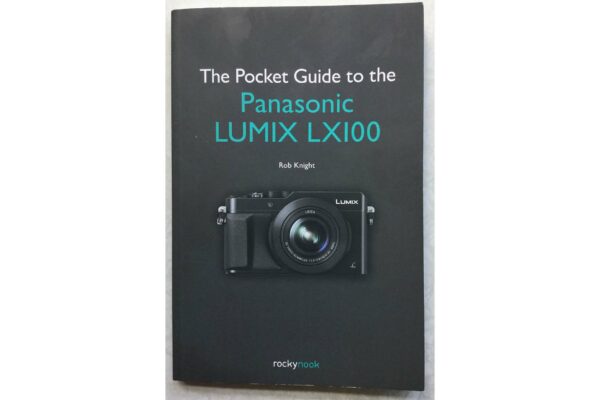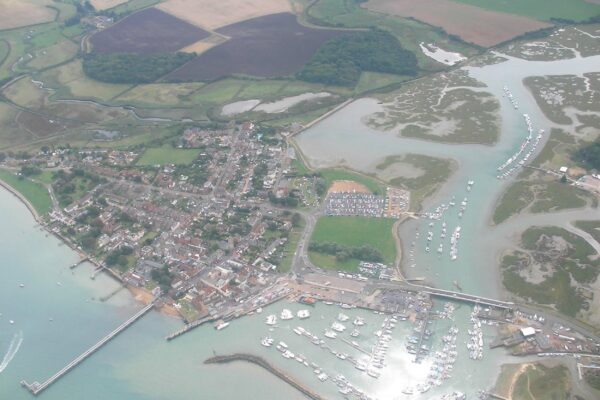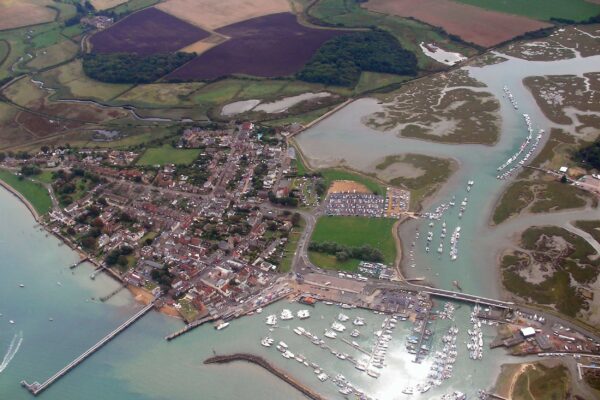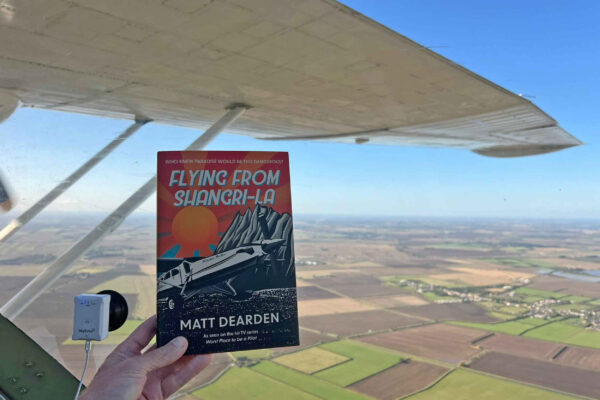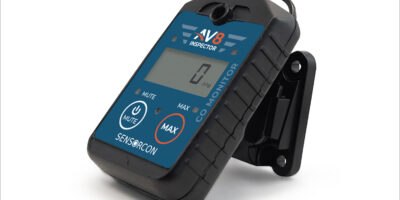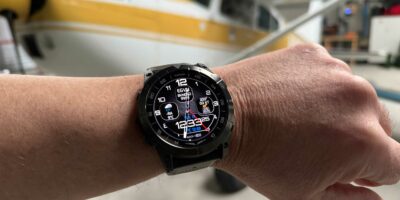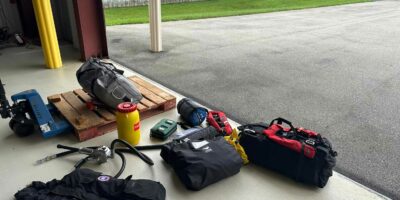I’ve been a compulsive picture-taker since I was barely big enough to pick up my dad’s folding Kodak Retina 35mm camera. So, although combining my love of photography with my love of flying was inevitable, the two aren’t always compatible. Hurtling along at 120kt while fiddling with camera settings, or looking for that dropped lens cap, never seemed a good idea. Especially if you’re heading towards another pilot doing the same thing.
I decided to draw up a list of qualities needed in a ‘cockpit camera’. Something that could take still images of those fantastic airborne views, but with the minimum of fuss. I’ve tried 14 different cameras and the best so far is the Panasonic LX100 with its wonderful Leica lens. Here’s my criteria list and the LX100’s qualities:
Small enough to stow within reach, light enough to not become a missile if things go pear-shaped, but large enough to use easily
Weighing at 395g and measuring 115 x 66 x 55mm means it’s compact enough, but still usable. Tick.
A fast, wide, stabilised lens
The enemy of photography, from any moving, vibrating vehicle, is camera shake. A F1.8 Leica lens and a max shutter speed of 1/16000th of a second, plus optical stabilisation and good results at high ISO speeds (up to 3,200 before the image gets a tad noisy) really helps. Another tick.
A wide zoom up to 75mm
Zooming in magnifies the effect of camera shake, especially if the air is anything other than billiard ball smooth. On a flight over an open-air theatre I asked my passenger to take some shots for me on an SLR but, ‘don’t use the zoom up to its 200mm max’. He used the zoom. Every shot was blurred and useless… 75mm is not the most I would use, but it works well, and I’m happy to crop the much larger RAW images on my PC. More on that later.
Physical controls that can be used with flying gloves rather than menus for important functions
The LX100 uses analogue controls for aperture, shutter speed, exposure compensation, programme selection, auto-focus mode and drive mode. No having to access menus or scrolling through endless options, literally ‘on the fly’. It feels like an old film camera, which is rather nice.
Good image and video quality
The Leica Vario-Summilux lens is a real gem. Leica has been in partnership with Panasonic since 2001. In fact Leica produces its own identically specified camera, the Leica D-Lux109. It comes with a different body and a 25% higher price tag. It’s slightly larger and heavier, but doesn’t have the front grip of the LX100 which, in my opinion, makes it harder to handle.
As I mostly take stills with this camera the video is less important to me, but nevertheless it is excellent. 4K video is great, but has its problems when it comes to editing (see my piece in FLYER’s August issue: Flight Filming on
a Budget).
Using 4K is less of an issue on this camera as I may only video 10 minutes of the flight instead of the whole flight.
Lens cap can’t drop off becoming a distraction, or worse, an obstruction
The LX100 does come with a normal lens cap, but you can buy the alternative DMW LFAC1 cap for around £30. Once the camera is switched on, the three lens cap ‘petals’ open up. Pretty clever, especially as it will still fit through the direct vision panel of a PA28.
Large, bright rear screen, doesn’t switch to viewfinder when obstructed
This is a major pain on some cameras which, when the rear sensor is blocked, assume you are looking through the viewfinder and shut the rear screen off. Easy to do in a moving aeroplane. Happily, the LX100 has a small button to choose between screen or viewfinder.
Usable wearing flying gloves…
Yes, LX100 has easy to use control dials.
Good travel camera
I’ve used it pretty much everywhere. For general use the lack of a zoom greater than 75mm is a drawback, and normally I avoid digital zooms, but the LX100 has a feature called iZoom. This doubles the zoom range for video and full-size Jpegs with minimal reduction in image quality.


